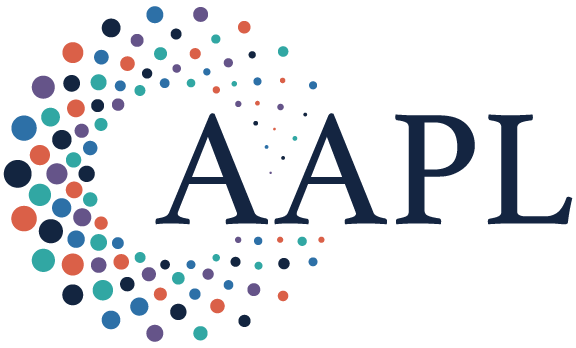As hospitals face pressures from rising costs and expenses, there is a greater need for medical institutions to reevaluate longstanding practices to further promote fiscal responsibility and resource conservation while upholding the high standards of patient care. Water usage is one area that is ripe for reevaluation and innovation; as water becomes an increasingly precious resource, hospitals may soon consider new efficiency programs and risk-management strategies to account for higher costs while serving as community stewards, particularly in times of drought.
Water utilization in surgical management is a particular area of concern. Operating rooms are incredibly resource-intensive and contribute up to 30% of the waste generated by a hospital.(1) On top of the water used in wound cleansing and other procedures, there is considerable plastic waste from bottles of saline and sterile water. Although normal saline is widely recommended as a cleansing solution, some wound care researchers argue that there are no clear benefits of sterile solutions versus tap water and other nonsterile solutions.
Multiple studies analyzing wound irrigation prior to suturing have looked at patient outcomes with tap water, sterile water, and saline, finding no significant differences in infection rates.(2,3) Another study focusing on surgical and sutured wounds found no increase in infection rates when comparing tap water and distilled water to saline.(4) Even in the setting of traumatic injuries such as open fractures of the lower extremities, researchers found no difference in surgical site infections or healing rates when comparing distilled water and saline.(5) Sloan, et al.,(6) demonstrated that tap water wound irrigation devices are equally effective in reducing bacterial counts in a rat laceration model compared to saline irrigation devices. Moreover, several studies(7,8) even reported no difference in surgical site infection rates between patients who underwent surgical cavity irrigation versus no irrigation prior to the wound closure.
With these studies in mind, we were curious to explore the potential expenditures and savings if hospitals resorted to alternative cleansing solutions in surgical management. If patient outcomes and quality of stay are strictly upheld, health system administrations will be eager to explore avenues that reduce costs and waste. One such solution would be to substitute the current purchasing of sterile water and saline-filled bottles from third parties for an in-house water distillation system that could provide hospitals with clean fluids for irrigation.
Methods
We analyzed the current expenditures and utilization of sterile water and saline solutions within a two-facility hospital network based in Savannah, Georgia, using data provided by the hospitals’ operations department. The network comprises two hospitals, with Hospital A housing 294 beds and Hospital B housing 320 beds. The monetary estimate for the proposed in-house water distillation system was derived by aggregating the annual costs associated with the distillation system, energy consumption, water usage, and projected additional full-time equivalents (FTEs).
Multiple distillery companies were consulted to obtain a range of the cost of distillery machine installation. The estimated cost of the distillation system used in our calculations was provided by Pure Water, Pure and Secure, LLC, Lincoln, Nebraska. The annual cost was calculated based on a 10-year life span of the distillation system. Energy costs were determined by the distillation system’s power requirements and Georgia Power’s peak energy pricing.(9)
The yearly water cost was calculated using the water and sewage rates from 2023 Adopted Revenue Ordinance of Savannah, Georgia, coupled with the utilization data for sterile water and saline provided by the hospital systems.(10) We calculated the FTE costs using QuickBooks’ Employee Cost Calculator.(11) We set the parameters at $10 per hour for a 40-hour workweek. This calculation considered both Federal and state taxes specific to Georgia. For ease of computation and to accommodate additional benefits such as health insurance, we added a standard sum of $6,800.25 to the cost of each FTE. In our commitment to thorough planning, we have included the cost of two FTEs in our proposal, despite the likelihood that existing staff could be trained to operate the new system. The annualized cost of the new system was then compared to the current purchasing scheme. The difference is divided by the total number of beds to calculate annual savings per bed.
Results
In 2022, the hospitals purchased 12,560 units of 500 mL sterile water, 8,849 units of 1000 mL sterile water, and 306 units of 3000 mL sterile water (Table 1). In addition, 18,366 units of 500 mL saline, 11,827 units of 1000 mL saline, and 17,778 units of 3000 mL saline were purchased for irrigation (see Table 1). In total, this represents 90,391 L (23,881.37 gallons) of sterile water and saline purchased and used for irrigation, at an overall cost of $305,180.78. This total does not include the additional cost associated with the disposal of 69,686 plastic bottles, indicating an even higher cost associated with the purchase and usage of sterile water and saline.

Our proposal involves using a centralized water distillation system to produce distilled water for irrigation use, replacing the prepackaged sterile water and saline. A top-of-the-line commercial distillation system, Pure Water, was selected for comparison and demonstration purposes. This system can produce up to 630 gallons of distilled water per day, or 229,950 gallons per year, nearly ten times volume currently used at Hospitals A and B. The cost of equipment is quoted at $62,335; this includes the distilling machine, pre- and post-treatment and delivery system, installation kit, a 500-gallon storage tank, and initial installation fee. Assuming a 7% combined city, county, and state tax rate, the total after-tax cost is $66,698. Assuming a 10-year life span of the system, the annualized cost of setting up the Pure Water distillation system is $6,669.80. Additionally, the system uses up to 14 kilowatts per hour of electricity. Even when using the on-peak rate quoted by Georgia Power for large businesses at 13.39 c per kWh, and assuming the system is constantly consuming power, the annual energy cost is estimated to be $16,432.74. The actual energy cost per year is likely to be lower than estimated here, because the hospitals will be charged lower rates per kWh during times of lower energy usage, and the system’s ability to produce around 10 times more distilled water than currently used indicates that the system would only need to be active one-tenth of the time. The 2023 Adopted Revenue Ordinance of Savannah, Georgia listed a marginal water rate of $1.49 per 100 cubic feet and a marginal sewage rate of $4.66 per 100 cubic feet. In total, water and sewer cost $6.15 per 100 cubic feet or 748.052 gallons. In 2022, Hospitals A and B purchased 23,881.37 gallons of water and saline from third parties. At a rate of $6.15 per 748.05 gallons, the same amount of water would cost around $196.33. Each FTE is anticipated to cost $23,199.75 annually, given a wage of $10 per hour for a 40-hour workweek, factoring in state and federal taxes. To accommodate for additional benefits, we’ve included an extra $6,800.25 per FTE, bringing the total estimated cost for each FTE to roughly $30,000. The annual cost of the new system is summarized in Table 2.

By investing in water distillation equipment, the new system is projected to have an estimated annual cost of $83,298.87. This investment would result in significant savings, as it is $221,881.91 cheaper than the current annual cost of acquiring sterile water and saline for irrigation. When considering the cost of plastic disposal associated with sterile water and saline, the savings are further increased with the implementation of the in-house distillery. With a total of 614 beds in the healthcare network, implementing the new water distillation system would result in an annual saving of $361.37 per bed.
Discussion
Upon conducting a thorough analysis, it is evident that the adoption of a centralized water distillation system holds immense potential for cost-saving opportunities for Hospitals A and B. Although previous studies have suggested utilizing tap water or even refraining from irrigation altogether to reduce hospital expenses, our proposal takes it a step further by introducing a financially viable alternative to tap water irrigation, achieved through the installation of a water distillation plant. The current expenditure on sterile water and saline solution bottles for irrigation amounts to $305,180.78 annually. However, by investing in the water distillation equipment, the estimated annual cost of the new system is projected to be $83,298.87, resulting in substantial total savings of $221,881.91, or $361.37 per bed, per year. The savings are further substantiated when plastic disposal costs are considered.
These savings are not limited only to the hospital network analyzed. The American Hospital Association states that there are 919,649 staffed hospital beds in the United States.(12) If the estimated savings of $361.37 per bed calculated in this study are extrapolated to every hospital system in the United States, that could result in nationwide healthcare savings of $565 million per year, and $5.65 billion over the next decade.
We recognize that estimated costs in this study may not be generalizable to every hospital or healthcare system. Different geographical areas have varying prices for their water, energy, and labor, and they have different needs. Additionally, the cost of the distillation system itself may vary depending on the location. In developing countries, and even certain areas in developed countries, sources of water for the distillation system can contain more impurities, increasing the cost of purification. Additionally, unreliable power grids present a challenge to a system dependent on local power to purify water, and the need to store clean fluids in case of emergencies may change the added value of such a system. Finally, larger institutions with higher production can use systems such as in-house water distillation units to reduce their costs, but for smaller hospitals and healthcare institutions, the economies of scale may not warrant the same approach. Each institution will need to conduct its own cost-benefit analysis to determine if a local water distillation unit could help them.
Conclusion
Across the nation, healthcare institutions are looking for avenues to reduce the amount they pay for supplies necessary for providing effective care to their patients. One cost faced by all institutions is the price of sterile fluids for irrigation and other uses. By utilizing a centralized distillation system, the hospital can ensure a reliable and consistent source of high-quality distilled water, saving millions of dollars and providing financial relief to an already financially strained healthcare system.
References
Rammelkamp Z, Dirnberger J, Johnson G, Waisbren S. An audit of all waste leaving the operating room: can the surgical suite be more environmentally sustainable?. World Medical & Health Policy. 2021;13:126-136. https://doi.org/10.1002/wmh3.397
Weiss EA, Oldham G, Lin M, et al. Water is a safe and effective alternative to sterile normal saline for wound irrigation prior to suturing: a prospective, double-blind, randomized, controlled clinical trial. BMJ Open. 2013;3:e001504. https://doi.org/10.1136/bmjopen-2012-001504
Moscati RM, Mayrose J, Reardon RF, Janicke DM, Jehle DV. A multicenter comparison of tap water versus sterile saline for wound irrigation. Acad Emerg Med. 2007;14:404-409. https://doi.org/10.1111/j.1553-2712.2007.tb01798.x
Fernandez R, Griffiths R, Ussia C. Wound cleansing: which solution, what technique? Prim Intention. 2001;9:51-58. https://doi.org/10.1002/14651858.CD003861
Olufemi OT, Adeyeye AI. Irrigation solutions in open fractures of the lower extremities: evaluation of isotonic saline and distilled water. SICOT J. 2017; 3:7. https://doi.org/10.1051/sicotj/2016031 .
Sloan B, Mohammad H, Abutaleb N, Seleem M. Comparison between a novel tap water wound irrigation device with sterile saline device in an open traumatic wound animal model. Trauma. 2020;22:176-181. https://doi.org/10.1177/1460408619857399
Norman G, Atkinson RA, Smith TA, et al. Intracavity lavage and wound irrigation for prevention of surgical site infection. Cochrane Database Syst Rev. 2017;(10): CD012234. https://doi.org/10.1002/14651858.CD012234.pub2 .
Ambe PC, Rombey T, Rembe JD, Dörner J, Zirngibl H, Pieper D. The role of saline irrigation prior to wound closure in the reduction of surgical site infection: a systematic review and meta-analysis. Patient Saf Surg. 2020;14:47. https://doi.org/10.1186/s13037-020-00274-2
Georgia Power. (2023). Electric Service Tariff. Time of Use (TOU) Half-Hourly Pricing - Rate Schedule HLF-12. www.georgiapower.com/content/dam/georgia-power/pdfs/business-pdfs/tariffs/2023/TOU-HLF-12.pdf .
City of Savannah. 2023 Revenue Ordinance. www.savannahga.gov/DocumentCenter/View/27060/2023-Revenue-Ordinance
Intuit. Employee Cost Calculator. QuickBooks blog. https://quickbooks.intuit.com/r/employee-cost-calculator/
American Hospital Association. Fast facts on U.S. hospitals. 2023. www.aha.org/statistics/fast-facts-us-hospitals

